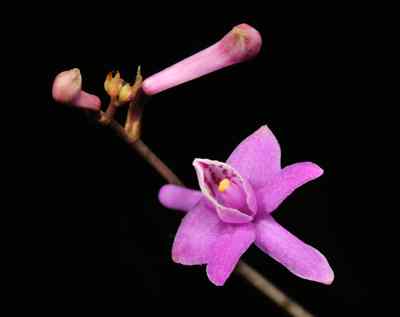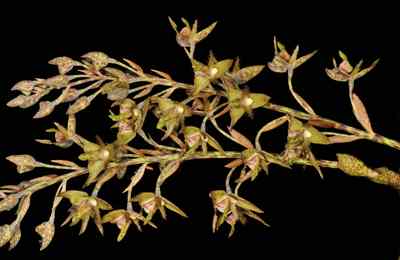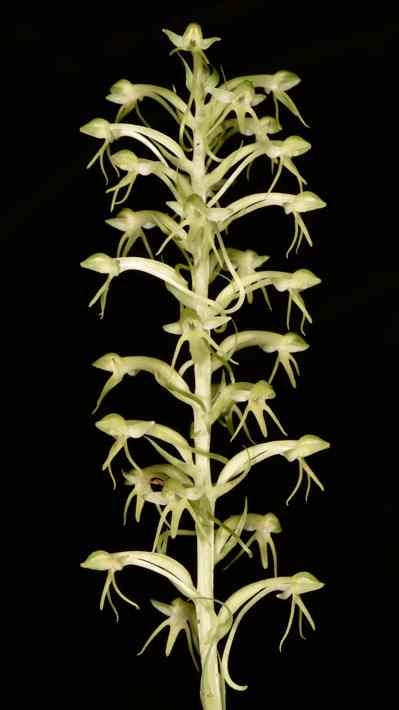The Plant
Terrestrial. Plant with varying height, from 2.25 to 9 ft. Stem erect, reed like woody structure, around 1.5 to 2.5 cm in width. Leaves many, alternatively arranged, membranous, acuminate, sessile, clasping, sheathed at the base, 4 to 12 cm long and 1.25 to 2 cm in width. Flowers in branched racemose, many flowered.
The Flower
Flowers large, 3 to 5 cm across. Sepals unequal, dorsal erect, oblong; lateral parallel to each other, underneath the lip, lanceolate, one nerved. Petals broader than the sepals, rhomboid with pointed apex, spreading, one nerved. Lip variable, portion between its base and mouth convolute round the column, mouth large and spreading, deeply bifid, with numerous parallel veins. The disc with three lamellae.
Flower colour varies from plant to plant. Sepals, petals and the convolate portion of the lip are with shades of pink. The spreading mouth is of a darker shade, with many veins.

The Pursuit
My first journey uphill the Kalimpong-Sikkim road from Siliguri was in a hired vehicle – over loaded with too much luggage inside and poring heavily outside. Through the foggy windowpane, I spotted this plant in bloom with many of them in flower. To be frank, in those days I was not aware of the abundance of this species and its relatively longer blooming season. Hence, I wanted to document those flowers then and there. It was raining heavily and removing the camera and accessories from the fully loaded luggage inside the vehicle was not so easy. Out of curiosity I made our vehicle stop there and observed the flowers thoroughly. There were many flowers of brilliant pink colour. The driver was kind enough to pull down the luggage and help me in getting all those instruments needed for the shoot. However, the need of the hour, the umbrella was not traceable. It was in one of the suitcases but we were not able to locate it.
As it was the first species I had located I was utterly disappointed to leave the documentation undone. As we were about to leave, I spotted two people walking towards the other side with umbrellas. As they approached our car, I made a very polite request to borrow their umbrella in Hindi, which was promptly translated to Nepali by my driver. They obliged happily. My driver made both of them sit in our vehicle and we took their umbrellas and produced a few photographs – of course not so technically perfect ones!!!
Later on, in my entire four years in the hills, I had spotted this species several hundred times from many locations. Each of them shows its own colour pattern; hence I document this species almost every time I got an opportunity.
Reference:
Arundina bambusifolia Lindl., Page no 113 of The Orchids of the Sikkim-Himalayas by Sir. George King and Robert Pantling (1898).








